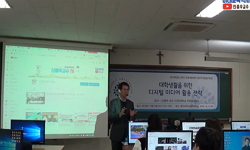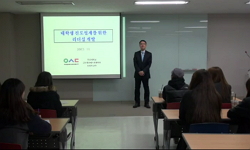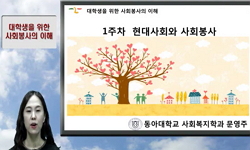College and graduate students experience stress in various aspects of their daily and academic lives, such as study, career, and interpersonal relationships. Moreover, Korea's competition and achievement-oriented social structure can increase their st...
http://chineseinput.net/에서 pinyin(병음)방식으로 중국어를 변환할 수 있습니다.
변환된 중국어를 복사하여 사용하시면 됩니다.
- 中文 을 입력하시려면 zhongwen을 입력하시고 space를누르시면됩니다.
- 北京 을 입력하시려면 beijing을 입력하시고 space를 누르시면 됩니다.
https://www.riss.kr/link?id=T17092029
- 저자
-
발행사항
[Seoul] : Graduate School, Yonsei University, 2024
-
학위논문사항
학위논문(석사) -- Graduate School, Yonsei University , Department of Interior Architecture and Built Environment , 2024.8
-
발행연도
2024
-
작성언어
영어
- 주제어
-
발행국(도시)
서울
-
기타서명
이용자의 심리적 지원을 위한 대학 심리상담센터의 환경계획 방안
-
형태사항
ix, 107, viii, 121 p. : 삽화(일부천연색) ; 26 cm
-
일반주기명
지도교수: Mikyoung Ha
-
UCI식별코드
I804:11046-000000556379
- 소장기관
-
0
상세조회 -
0
다운로드
부가정보
다국어 초록 (Multilingual Abstract)
This study identifies the environmental planning factors of the space that affect psychological support when college and graduate students use the university psychological counseling center. First, the environmental factors of university psychological counseling centers were classified using a literature review. Further, the detailed subfactors for each factor were derived. Second, through field surveys and prior interviews, the current status of university psychological counseling centers in the Seoul metropolitan area and characteristics of the space were identified. Third, students enrolled in universities in the metropolitan area were surveyed regarding their need for university psychological counseling centers, importance of environmental plans, and satisfaction with their use. In addition, by deriving the factors for the environment of the psychological counseling center, the importance of each environmental planning element was analyzed to derive those elements which affect the comfort of counseling.
The survey results revealed that "privacy," "sociality," and "psychological stability" were the main environmental planning factors necessary for the spatial composition of university psychological counseling centers. Thus, the environmental planning for this should be as follows. First, a well-insulated wall should be used to secure the privacy of students. In addition, the space and movement used by students and counselors should be clearly distinguished. Further, visual exposure should be minimized through partitions or arrangements of furniture in the reception and waiting spaces. Second, for spatial support considering sociality, the waiting space should have an open space structure, and an environment should be created where students can freely rest and inquire. This has an important meaning: students need a space where privacy protection and autonomy are simultaneously guaranteed. Third, to promote psychological stability, soft textured materials for the interiors and brightness adjustable lighting inside the counseling room should be used. For instance, the wall can be finished with a soft texture. Further, while utilizing fabric furniture, carpets, and rugs, independent lamps that provide warm light can be placed in the counseling room to increase the sense of stability. Fourth, an environment should be created where users can enjoy nature around the psychological counseling center. Furthermore, natural light should be used as much as possible by placing windows indoors unless there is a privacy problem.
In conclusion, the university psychological counseling center should be designed as an environment that guarantees the psychological stability and privacy of students, promotes social interaction, and provides psychological stability. Privacy can be protected through sound insulation and visual blocking. Meanwhile, students' satisfaction can be increased by providing an open and flexible space for them to adjust. In addition, soft materials should be used for spaces and furniture. Finally, psychological stability should be promoted by appropriately using natural elements and lighting. These environmental planning elements can help the university psychological counseling center in providing effective psychological support to students.
College and graduate students experience stress in various aspects of their daily and academic lives, such as study, career, and interpersonal relationships. Moreover, Korea's competition and achievement-oriented social structure can increase their stress. According to a survey conducted by the National Council of University Psychological Counseling Centers, a significant number of college students experience stress; some even suffer from depression and anxiety symptoms. Furthermore, more than a few graduate students are diagnosed with depression or suffer from burnout syndrome. Although the role of psychological counseling centers in universities is important for the psychological support of undergraduate and graduate students, actual interest and support remain insufficient. In many cases, despite the desire for a well-planned and well-designed physical environment of counseling centers, constructing such a physical environment is challenging due to the lack of budget, manpower, and support and guidelines for the physical environment. However, few scholars have examined the physical environment of counseling institutions in Korea. Moreover, research on spatial design elements has only begun appearing in recent years.
This study identifies the environmental planning factors of the space that affect psychological support when college and graduate students use the university psychological counseling center. First, the environmental factors of university psychological counseling centers were classified using a literature review. Further, the detailed subfactors for each factor were derived. Second, through field surveys and prior interviews, the current status of university psychological counseling centers in the Seoul metropolitan area and characteristics of the space were identified. Third, students enrolled in universities in the metropolitan area were surveyed regarding their need for university psychological counseling centers, importance of environmental plans, and satisfaction with their use. In addition, by deriving the factors for the environment of the psychological counseling center, the importance of each environmental planning element was analyzed to derive those elements which affect the comfort of counseling.
The survey results revealed that "privacy," "sociality," and "psychological stability" were the main environmental planning factors necessary for the spatial composition of university psychological counseling centers. Thus, the environmental planning for this should be as follows. First, a well-insulated wall should be used to secure the privacy of students. In addition, the space and movement used by students and counselors should be clearly distinguished. Further, visual exposure should be minimized through partitions or arrangements of furniture in the reception and waiting spaces. Second, for spatial support considering sociality, the waiting space should have an open space structure, and an environment should be created where students can freely rest and inquire. This has an important meaning: students need a space where privacy protection and autonomy are simultaneously guaranteed. Third, to promote psychological stability, soft textured materials for the interiors and brightness adjustable lighting inside the counseling room should be used. For instance, the wall can be finished with a soft texture. Further, while utilizing fabric furniture, carpets, and rugs, independent lamps that provide warm light can be placed in the counseling room to increase the sense of stability. Fourth, an environment should be created where users can enjoy nature around the psychological counseling center. Furthermore, natural light should be used as much as possible by placing windows indoors unless there is a privacy problem.
In conclusion, the university psychological counseling center should be designed as an environment that guarantees the psychological stability and privacy of students, promotes social interaction, and provides psychological stability. Privacy can be protected through sound insulation and visual blocking. Meanwhile, students' satisfaction can be increased by providing an open and flexible space for them to adjust. In addition, soft materials should be used for spaces and furniture. Finally, psychological stability should be promoted by appropriately using natural elements and lighting. These environmental planning elements can help the university psychological counseling center in providing effective psychological support to students.
국문 초록 (Abstract)
본 연구에서는 대학생과 대학원생이 대학 심리상담센터를 이용할 때 심리적인 지원에 미치는 공간의 환경계획 요소를 파악하는 것을 목적으로 한다. 이를 위해 첫째, 선행연구 분석을 통하여 대학 심리상담센터의 환경 요인을 분류하고, 각 요인에 따른 세부 요소들을 도출하였다. 둘째, 현장 조사와 사전 인터뷰를 통해 수도권 내 대학 심리상담센터의 현황과 공간의 특성을 파악하였다. 셋째, 설문 조사를 통해 수도권 내 대학교에 재학 중인 학생들의 대학 심리상담센터에 대한 필요도, 환경계획에 대한 중요도와 이용 만족도를 조사하였다. 또한 심리상담센터의 환경에 대한 요인과 요소를 도출하여 각 환경계획 요소에 대한 중요도를 분석하고, 상담 시 편안함에 영향을 주는 환경계획 요소를 도출하였다.
이와 같은 조사 결과를 통해 본 연구는 대학 심리상담센터의 공간구성에 필요한 주요 환경계획 요인은 '프라이버시', '사회성', '심리적 안정성'이라는 결과를 얻을 수 있었다. 이를 위한 환경계획 방안은 다음과 같다. 첫째, 학생들의 프라이버시를 확보하기 위해 방음이 잘 이루어지는 벽체의 사용이 필수적이다. 또한 학생과 상담사가 이용하는 공간과 동선을 명확히 구분하고, 접수 및 대기 공간에서는 칸막이나 가구 배치를 통해 시각적 노출을 최소화하는 것이 중요하다. 둘째, 사회성을 고려한 공간적 지원을 위해 대기 공간은 열린 공간 구조를 가져야 하며, 학생들이 자유롭게 휴식을 취하고 문의할 수 있는 환경을 조성해야 한다. 이는 학생들이 프라이버시 보호와 자율성을 동시에 보장받는 공간이 필요하다는 점에서 중요한 의미를 가진다. 셋째, 심리적 안정성을 도모하기 위해 부드러운 질감의 소재를 활용한 인테리어와 상담실 내부에 밝기 조절이 가능한 조명을 사용하는 것이 권장된다. 벽체는 부드러운 질감으로 마감하고, 패브릭 소재의 가구와 카펫, 러그 등을 활용함과 동시에 상담실 내에는 따뜻한 빛을 제공하는 독립적인 램프를 비치하여 안정감을 높일 수 있다. 넷째, 심리상담센터 주변에 자연을 즐길 수 있는 환경을 조성하고, 프라이버시 문제가 없는 한 실내에 창문을 배치하여 자연광을 최대한 활용해야 한다.
결론적으로, 대학 심리상담센터는 학생들의 심리적 안정과 프라이버시를 보장하고, 사회적 상호작용을 촉진하는 환경이면서 심리적 안정감을 줄 수 있는 공간으로 설계되어야 한다. 이를 위해 방음과 시각적 차단을 통해 프라이버시를 보호하고, 개방적이면서 학생들이 조정할 수 있는 유연한 공간을 제공함으로써 학생들의 만족도를 높일 수 있다. 또한, 공간과 가구에 부드러운 소재를 활용하고, 자연 요소와 조명을 적절히 이용하여 심리적 안정성을 도모해야 한다. 이러한 환경계획 요소들은 대학 심리상담센터가 학생들에게 효과적인 심리적 지원을 제공하는 데 기여할 것으로 기대된다.
대학생과 대학원생의 스트레스는 학업, 진로, 대인 관계 등 다양한 측면에서 발생하며, 한국의 경쟁과 성취 중심 사회 구조는 이들의 스트레스를 가중시키는 것으로 나타났다. 전국 대학교 ...
대학생과 대학원생의 스트레스는 학업, 진로, 대인 관계 등 다양한 측면에서 발생하며, 한국의 경쟁과 성취 중심 사회 구조는 이들의 스트레스를 가중시키는 것으로 나타났다. 전국 대학교 심리상담센터 협의회의 조사에 따르면, 대학생의 상당수는 스트레스를 경험하며 그중 일부는 우울 증상과 불안 증상을 겪는 것으로 밝혀졌다. 대학원생의 경우, 우울증 진단을 받거나 번아웃 증후군을 겪는 학생들이 적지 않았다. 이러한 대학생과 대학원생의 심리적 지원을 위해 대학 내 심리상담센터의 역할이 중요하다고 꾸준히 언급되고 있지만, 현실적으로 관심과 지원은 여전히 부족한 것으로 나타났다. 예산과 인력 부족뿐만이 아니라 물리적 환경에 대한 지원과 가이드라인의 부재 등으로 물리적 환경의 구성을 어려워하는 경우가 많으나 상담센터의 물리적 환경에 대한 욕구는 크게 나타났다. 그러나 국내에서는 상담 기관의 물리적 환경에 관한 연구가 부족하며, 최근에야 공간 디자인 요소에 관한 연구가 나타나기 시작했다.
본 연구에서는 대학생과 대학원생이 대학 심리상담센터를 이용할 때 심리적인 지원에 미치는 공간의 환경계획 요소를 파악하는 것을 목적으로 한다. 이를 위해 첫째, 선행연구 분석을 통하여 대학 심리상담센터의 환경 요인을 분류하고, 각 요인에 따른 세부 요소들을 도출하였다. 둘째, 현장 조사와 사전 인터뷰를 통해 수도권 내 대학 심리상담센터의 현황과 공간의 특성을 파악하였다. 셋째, 설문 조사를 통해 수도권 내 대학교에 재학 중인 학생들의 대학 심리상담센터에 대한 필요도, 환경계획에 대한 중요도와 이용 만족도를 조사하였다. 또한 심리상담센터의 환경에 대한 요인과 요소를 도출하여 각 환경계획 요소에 대한 중요도를 분석하고, 상담 시 편안함에 영향을 주는 환경계획 요소를 도출하였다.
이와 같은 조사 결과를 통해 본 연구는 대학 심리상담센터의 공간구성에 필요한 주요 환경계획 요인은 '프라이버시', '사회성', '심리적 안정성'이라는 결과를 얻을 수 있었다. 이를 위한 환경계획 방안은 다음과 같다. 첫째, 학생들의 프라이버시를 확보하기 위해 방음이 잘 이루어지는 벽체의 사용이 필수적이다. 또한 학생과 상담사가 이용하는 공간과 동선을 명확히 구분하고, 접수 및 대기 공간에서는 칸막이나 가구 배치를 통해 시각적 노출을 최소화하는 것이 중요하다. 둘째, 사회성을 고려한 공간적 지원을 위해 대기 공간은 열린 공간 구조를 가져야 하며, 학생들이 자유롭게 휴식을 취하고 문의할 수 있는 환경을 조성해야 한다. 이는 학생들이 프라이버시 보호와 자율성을 동시에 보장받는 공간이 필요하다는 점에서 중요한 의미를 가진다. 셋째, 심리적 안정성을 도모하기 위해 부드러운 질감의 소재를 활용한 인테리어와 상담실 내부에 밝기 조절이 가능한 조명을 사용하는 것이 권장된다. 벽체는 부드러운 질감으로 마감하고, 패브릭 소재의 가구와 카펫, 러그 등을 활용함과 동시에 상담실 내에는 따뜻한 빛을 제공하는 독립적인 램프를 비치하여 안정감을 높일 수 있다. 넷째, 심리상담센터 주변에 자연을 즐길 수 있는 환경을 조성하고, 프라이버시 문제가 없는 한 실내에 창문을 배치하여 자연광을 최대한 활용해야 한다.
결론적으로, 대학 심리상담센터는 학생들의 심리적 안정과 프라이버시를 보장하고, 사회적 상호작용을 촉진하는 환경이면서 심리적 안정감을 줄 수 있는 공간으로 설계되어야 한다. 이를 위해 방음과 시각적 차단을 통해 프라이버시를 보호하고, 개방적이면서 학생들이 조정할 수 있는 유연한 공간을 제공함으로써 학생들의 만족도를 높일 수 있다. 또한, 공간과 가구에 부드러운 소재를 활용하고, 자연 요소와 조명을 적절히 이용하여 심리적 안정성을 도모해야 한다. 이러한 환경계획 요소들은 대학 심리상담센터가 학생들에게 효과적인 심리적 지원을 제공하는 데 기여할 것으로 기대된다.
목차 (Table of Contents)
- 표 목 차
- 그림목차
- 국문요약
- 1. 서론
- 1.1. 연구의 배경 및 목적
- 표 목 차
- 그림목차
- 국문요약
- 1. 서론
- 1.1. 연구의 배경 및 목적
- 1.2. 연구 문제
- 1.3. 연구의 범위 및 한계
- 2. 이론적 고찰
- 2.1 건축 공간에 적용되는 치유환경 관련 이론
- 2.2.1. 지원적 디자인 이론
- 2.2.2. 살루토제닉(Salutogenic) 모델
- 2.2. 심리적 지원에 대한 치유환경의 영향
- 2.3. 심리상담센터의 환경계획요소
- 2.3.1. 심리상담센터에 적용되는 치유환경 관련 선행연구
- 2.3.2. 심리상담센터 환경계획 요소 도출
- 2.4. 대학 심리상담센터의 공간 구성
- 3. 연구 방법
- 3.1. 현장 조사
- 3.1.1. 조사 대상지 선정
- 3.1.2. 조사 도구 및 내용
- 3.2. 사전 인터뷰
- 3.2.1. 대상자 선정
- 3.2.2. 사전 인터뷰 조사 도구
- 3.2.3. 자료의 처리 및 분석 방법
- 3.3. 설문 조사
- 3.3.1. 조사 대상자
- 3.3.2. 조사 방법 및 절차
- 3.3.3 조사 도구 및 내용
- 3.3.4. 자료의 처리 및 분석 방법
- 4. 연구 결과 및 분석
- 4.1. 현장 조사 분석 결과
- 4.1.1. A 대학교 심리상담센터 1 (현장 1)
- 4.1.2. A 대학교 심리상담센터 2 (현장 2)
- 4.1.3. B 대학교 심리상담센터 (현장 3)
- 4.1.4. C 대학교 심리상담센터 (현장 4)
- 4.1.5. D 대학교 심리상담센터 (현장 5)
- 4.1.6. E 대학교 심리상담센터 (현장 6)
- 4.1.7. 현장 조사 결과 종합
- 4.2. 사전 인터뷰 분석 결과
- 4.2.1. 사전 인터뷰 개요
- 4.2.2. 사전 인터뷰 결과
- 4.3. 설문 조사 결과
- 4.3.1. 조사 문항의 신뢰도 분석
- 4.3.2. 조사 대상자의 일반적 사항
- 4.3.3. 학생들의 심리적 건강에 대한 욕구와 상담에 대한 필요도
- 4.3.4. 대학 심리상담센터 이용 현황과 만족도
- 4.3.5. 대학 심리상담센터 환경계획 유형화 및 중요도
- 4.3.6. 이용자 특성에 따른 환경계획 요소 중요도 차이
- 4.4. 대학 심리상담센터의 상담 시 편안함에 영향을 미치는 환경계획 요소
- 4.4.1 전체 학생들의 상담 시 편안함에 영향을 미치는 환경계획 요소
- 4.4.2 불안감이 높은 집단의 상담 시 편안함에 영향을 미치는 환경계획 요소
- 4.4.3 우울감이 높은 집단의 상담 시 편안함에 영향을 미치는 환경계획 요소
- 4.4.4 소결
- 4.5. 소결
- 5. 결론
- 5.1. 요약 및 결론
- 5.2. 제언
- 참고문헌
- 부 록












